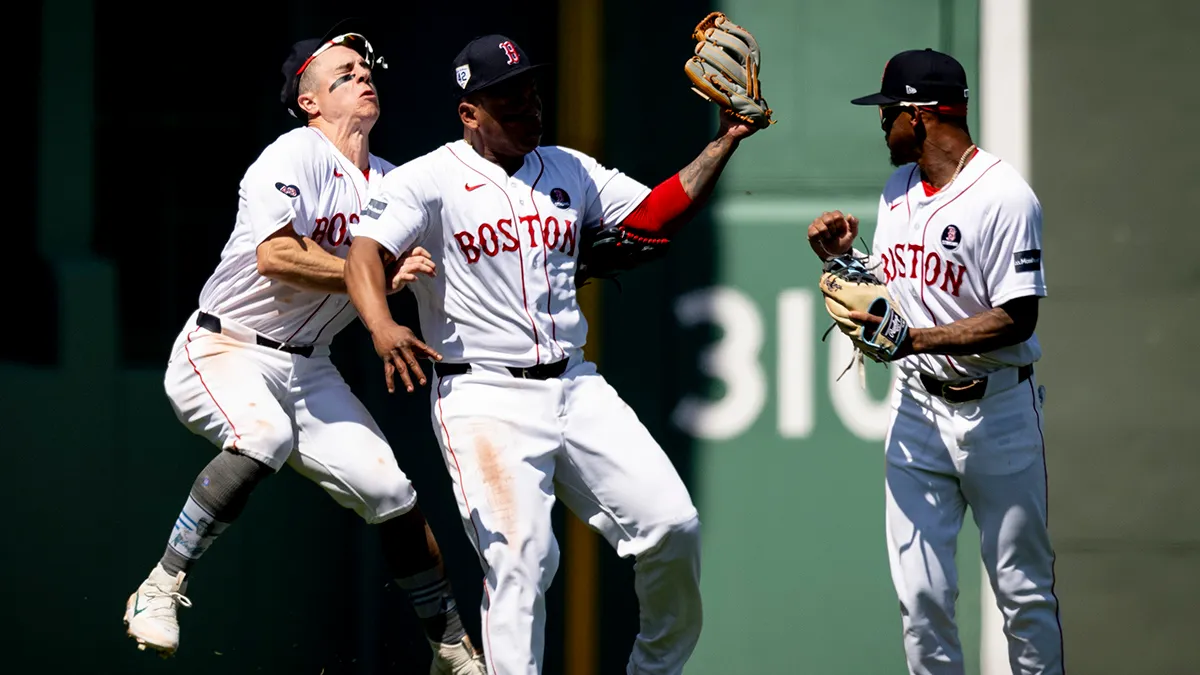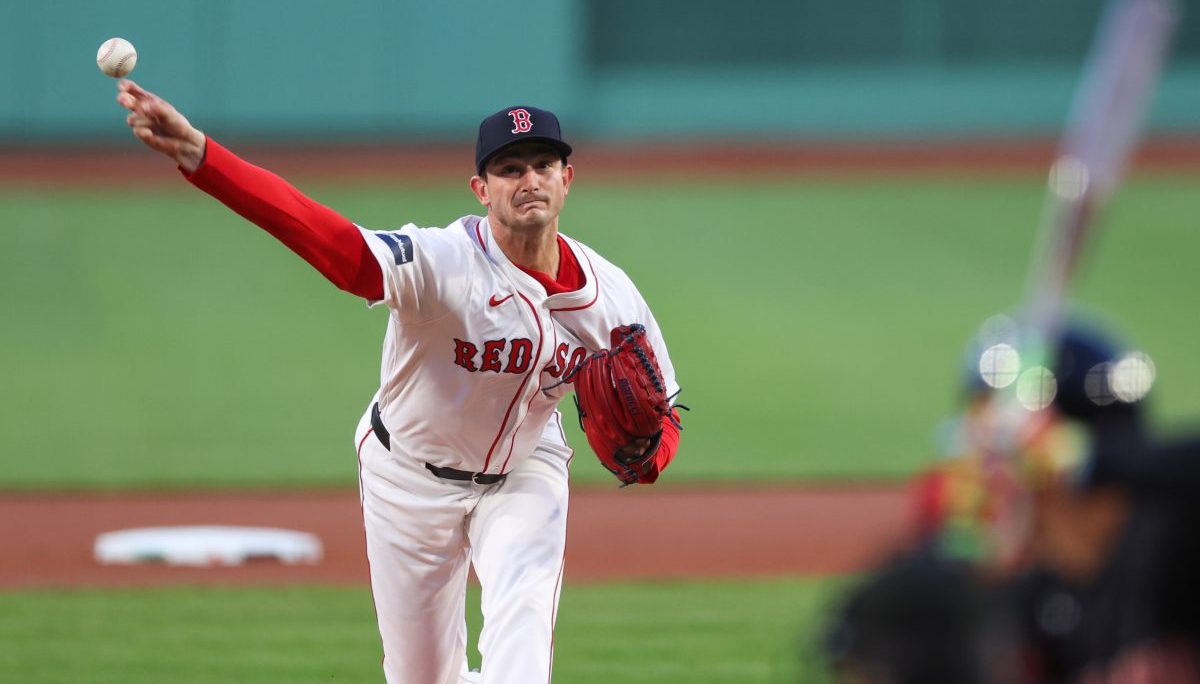Much like the midseason finale that leaves us hanging with an ominous "to be continued" until the spring, the Red Sox beat the CBA expiration clock on Wednesday night with a cliffhanger.
They made a flurry of moves from the predictable (Rich Hill) to the what-the-actual-bleep?!? (Jackie Bradley Jr.). In between, they added a depth piece in right-hander Michael Wacha and a future one in left-hander James Paxton.
Tomase: Red Sox prepared to wait for Paxton at expense of 2022 rotation
Stay in the game with the latest updates on your beloved Boston sports teams! Sign up here for our All Access Daily newsletter.
As things stand today, minus outfielder Hunter Renfroe and starter Eduardo Rodriguez, they're worse than they were when the season ended in Game 6 of the ALCS. So what are we to make of the 2022 roster after a flurry of last-minute jabs, rather than haymakers?
For one, there's a lot of work left to do and potentially not a lot of time to do it (although this probably plays to Chaim Bloom's strengths). But for another, it suddenly feels like they might actually spend some money without being constrained by the luxury tax.
File this under Remains to be Seen, of course, but consider two of Bloom's signature moves. First, he committed $6 million to Paxton potentially not to pitch at all this year while he rehabs from Tommy John, but with a pair of team options that could lock him down for 2023 and 2024.
Then he assumed some salary to take back Bradley, who's owed $12 million next year, in order to buy a pair of second-tier prospects from the Brewers in the Hunter Renfroe trade.
Boston Red Sox
Tomase: Making sense of Red Sox's shocking JBJ trade
Neither of those moves will make much, if any, impact on the upcoming season, and both of them fit roughly within the one-year qualifying offer of $18.4 million that Rodriguez declined before signing with the Tigers for five years and $77 million.
It's possible that Bloom is so focused on the future, he's willing to expend resources now that will come at the direct expense of 2022. But after reaching the ALCS, that's no way to reward a roster or a fan base.
So a more likely reading is that with the club in the market for at least one more starter, multiple relievers, and some combination of a first baseman, second baseman, and/or outfielder, John Henry is planning to loosen the purse strings enough to surpass the luxury tax threshold, assuming the new CBA includes one.
Using round numbers, the Red Sox have committed roughly $200 million to next year's roster. That leaves them only $10 million under last year's threshold, and if the new one is close to that, that's not enough money to round out the roster without trading someone like J.D. Martinez (which can't be discounted, especially if the NL introduces a universal DH).
Being able to spend doesn't mean throwing $300 million at Carlos Correa. But it at least means Bloom won't have to parcel out resources like finite grains of sand. And there's no shortage of areas in need of upgrade.
Start with the rotation, which has added depth, but not necessarily quality. The best pitcher they've acquired is Hill, but he turns 42 in March and thus any expectations must be tempered by his age. That said, the left-hander outperformed Rodriguez last year while going 7-8 with a 3.86 ERA in 158.2 innings between Tampa and the Mets.
Only once in 17 seasons has Hill thrown more frames. Since resurrecting his career in 2015 with the Red Sox, he is 50-30 with a 3.15 ERA.
"This guy is one of the best competitors in our game," Bloom said. "And it seems like he doesn't age. Wherever he goes, he has success. Not only is he a good pitcher, but he's a tremendous clubhouse presence."
Ideally, the Red Sox would add more than depth to a rotation that's relying on Chris Sale to regain the ace form he didn't immediately exhibit in his return from Tommy John, and on Nathan Eovaldi to remain healthy for another 32 starts. They watched the top free agent arms depart the market without seriously engaging for any of them, the most recent being All-Star right-hander Marcus Stroman, who signed a reasonable three-year, $71 million deal with the Cubs.
If the Red Sox don't want to spend on starters in free agency because they're typically bad investments, no argument here. The next step, however, will be prying away someone in trade, whether it's Oakland's Chris Bassitt or Frankie Montas, or perhaps one of Miami's surplus arms.
The bullpen, meanwhile, needs an overhaul, especially if either Tanner Houck or Garrett Whitlock lands in the rotation. The Red Sox re-signed right-hander Ryan Brasier, who was one of their most reliable arms down the stretch, but they'll need to replace veteran free agents Adam Ottavino and Hansel Robles, and they have no idea what they're going to get out of All-Star Matt Barnes, who signed a contract extension and then promptly fell off the face of the earth.
Offensively, Bradley looks like more of a fourth outfielder after hitting just .163 in Milwaukee, so the Red Sox should be in the market for help there, especially if prospect Jarren Duran becomes part of a trade to land a starter. The same goes for Bobby Dalbec, so they could need a stopgap first baseman to serve as a bridge to prospect Triston Casas. Depending on where they play Kiké Hernández, they could seek a starting second baseman.
That's a lot of variables to calculate while the sport goes on hiatus. Hopefully when action resumes sometime in February or March, the result isn't a letdown.


